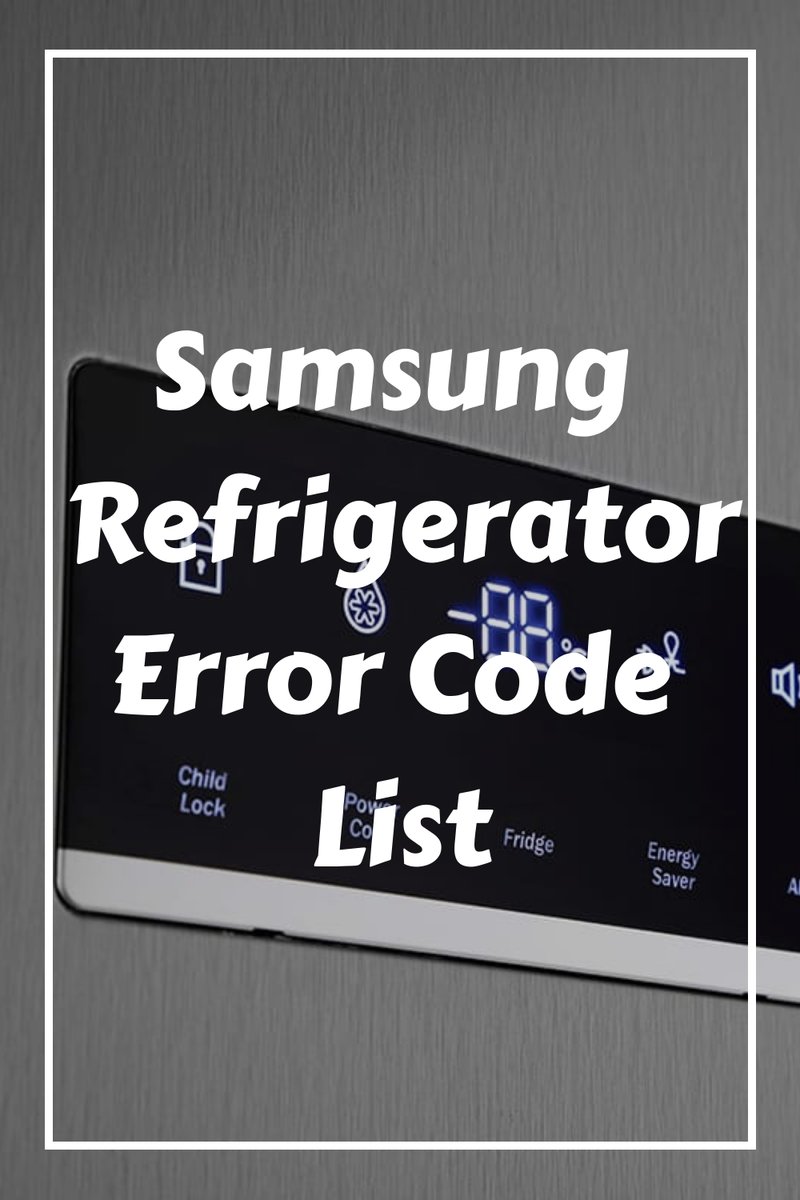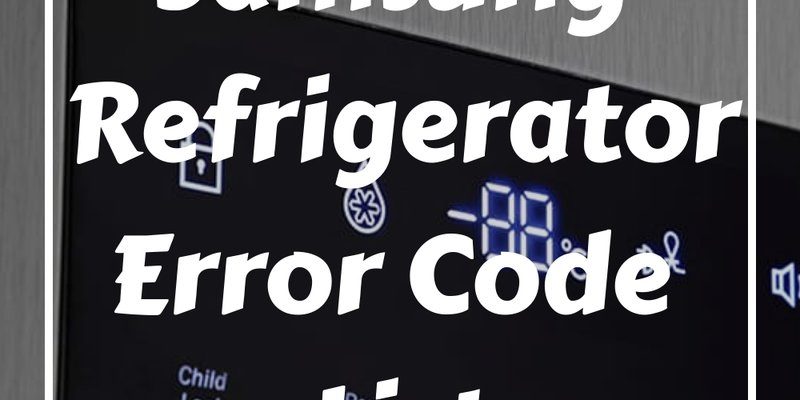
Error codes, while seemingly cryptic, are your appliance’s way of communicating that something’s off. Think of them as the refrigerator’s way of saying, “Hey, there’s a problem here that needs attention!” Just like warning lights on your car dashboard. The E2 error code on a Samsung refrigerator typically relates to the ice maker, specifically indicating an issue with its operation.
Understanding the E2 Error Code
When your Samsung refrigerator displays the E2 error code, it’s pointing towards a problem with the ice-making system. At its core, this error code is a signal that the ice maker isn’t functioning as it should. But what exactly does that mean for your fridge?
Imagine your refrigerator’s ice maker as a small factory within your appliance. Its sole job is to create ice cubes automatically, much like how a popcorn machine churns out popcorn. The E2 error code suggests there’s a hiccup in this process, like a popcorn machine that’s jammed. This could be due to a mechanical failure, a blocked water line, or even a sensor that’s gone haywire. Essentially, something is preventing the ice maker from completing its ice-making cycle.
You might be wondering, “What causes this hiccup?” There are several potential culprits behind the E2 error. It could be a faulty ice maker assembly, where individual components like the motor or the ice-making tray have worn out over time. Alternatively, there could be a clog or blockage preventing water from reaching the ice maker, similar to how a kink in a hose stops water from flowing. Lastly, a sensor malfunction could be sending incorrect signals, causing the ice maker to cease operation.
Is It Safe to Continue Using the Refrigerator?
Here’s the deal: while the E2 error means your ice maker is having issues, it doesn’t necessarily affect the overall cooling function of your refrigerator. The main compartment for storing food remains operational, so your groceries remain fresh. However, ignoring the error isn’t wise. It’s much like ignoring a leaky faucet—it might not seem like a huge deal initially, but over time it can lead to bigger problems.
Continuing to use the refrigerator without addressing the E2 error may not pose immediate safety risks, but it could lead to inefficiencies. The ice maker might continue attempting to complete its cycle, potentially straining the system. Imagine constantly trying to start a car with a dead battery—it might work for a while, but it’s inevitably not sustainable.
Moreover, if the issue is related to a water supply blockage, there’s a small risk of leaks, which could lead to water damage or mold growth inside the refrigerator. To avoid any long-term complications, addressing the error sooner rather than later is ideal.
How to Address the E2 Error Code
So, you’ve got the E2 error code staring at you. What should be your next move? The first step is essentially like performing basic first aid for your appliance.
Start by checking the basics: ensure the refrigerator is level. An uneven fridge can lead to various operational issues, including ice maker malfunctions. Next, inspect the water supply line. Ensure there are no kinks or blockages—as one might check a garden hose before watering plants. If you find any obstructions, clearing them may resolve the issue.
If these steps don’t solve the problem, you might need to dig deeper. Unplugging the fridge for a short period can sometimes reset the system, much like restarting a computer to fix a software glitch. If the error persists, consulting the refrigerator’s manual or contacting Samsung’s customer service for detailed troubleshooting or professional repair might be necessary. It’s akin to calling in a plumber when DIY fixes don’t stop a leak.
Preventive Measures for Future Issues
Just like regular car maintenance prevents breakdowns, keeping your refrigerator in good condition can help avoid recurring error codes. Regularly check the water filter and replace it as recommended—think of it as changing the oil in your car. A clean filter ensures the water reaching your ice maker is free of impurities that could cause blockages.
Occasional manual inspection of the ice maker for any visible signs of wear or obstruction is also beneficial. Keeping the appliance level and in an adequately ventilated space ensures it operates efficiently, much like keeping tires inflated for better mileages.
Thus, while the E2 error code may appear daunting, approaching it calmly and methodically can keep your refrigerator running smoothly. By understanding what the code signifies and taking the proper steps to address it, you can maintain the longevity and efficiency of your appliance.
